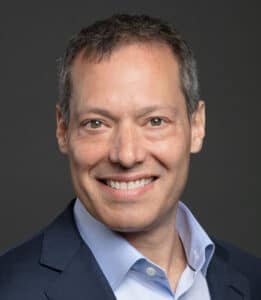In the beginning there was only one stock exchange – founded under a Buttonwood tree.
It was the only game in town for those looking to trade shares of stock and it was all things to all people.
Fast forward almost 230 years and the equities marketplace has upwards of 16 different stock exchanges, carving out their distinct piece of the pie, looking to be fewer things to traders and investors, focusing on one or two core tenets. And while the oldest and most established exchanges remain, it is these new upstarts such as Long Term Stock Exchange, Members Exchange and even alternative trading venues like Liquidnet that are capitalizing on talent and technology in carving out new marketplaces and liquidity.

In speaking at the Piper Sandler Virtual Global Exchange & FinTech Conference today, Jonathan Kellner, Chief Executive Officer at Members Exchange (MEMX) said that his to-be-launched exchange focuses on three core competencies – its people, advanced technology and investment to bring its value proposition. And during its formation, MEMX has canvassed many market players including the buyside, wholesalers and market makers to set itself apart but it was technology, the cloud, Kellner plans to leverage the most.
“Our ability to build today using newest the newest technology helps us,” Kellner began. “Not that other exchanges don’t use the latest technology, but or building out from scratch today gives us an advantage.”
And MEMX is building itself around the cloud. The cloud, Kellner said, is the best choice for the most transparent and cost efficient means of running its servers and storing data and records. To hear him tell it, using the cloud will help MEMX run its exchange on just one rack with 76 servers versus multiple racks and many more servers like the established exchanges that operate on 15 racks.
“By operating on fewer racks and servers there are fewer hops between racks and decreases latency and maximizes efficiency,” Kellner said. “Using the cloud and leveraging it for all to see creates a golden source of truth.”
For the Long Term Stock Exchange (LTSE), the Holy Grail of truth lies in its focus on being more true to the Exchange Act of 1940 – providing capital formation for companies and ensuring good governance, according to its CEO Zoran Perkov.

“We’re trying to build the LTSE to offer companies and investors a long-term vision for their mutual benefit,” Perkov said. “Our target is next generation companies looking to create value over time and for society. We focus on the listings.”
It is at the listing level where companies choosing to list on LTSE can set themselves apart – focusing on grabbing investors with a long-term investing horizon rather than trading volume and meet certain long-term principles, such as being environmentally sound and focused on good governance. By focusing on these tenets, Perkov looks to attract investors with a different corporate view.
“This allows investors to have a different view of the company and be accountable to the public,” Perkov said, “and decreases risk to investors on how companies are governed. We don’t think we are creating something where everyone has to meet us but where they are comfortable meeting.“
He said LTSE charges a membership fee but doesn’t offer hidden liquidity like fellow panel member Liquidnet does and has no proprietary data feeds. Rather, LTSE wants to promote “true” oversight of listed companies and the participants who trade on his exchange.

“We’re here as an option. Our core focus is on the companies, stakeholders and owners,” Perkov said. ”Absolute trading volume is not our goal.”
But for some traders, the name of the game is trading volume and liquidity. Enter Liquidnet, the multi-asset fintech block crossing network. Its CEO, Brian Conroy was present on the Private Markets panel saying that while his counterparts at MEMX and LTSE were focusing on carving out niches within equities, he was now turning his sights towards other asset classes such as fixed-income, where liquidity isn’t as plentiful and electronic trading constitutes only 20 percent of the executed order flow.
“We think big opportunities aren’t in equities but other asst classes – the credit markets,” Conroy said. “There’s a paradigm shift here, and we have an opportunity in fixed income trading and information exchange. We can help investors in the credit and information exchange places.”



